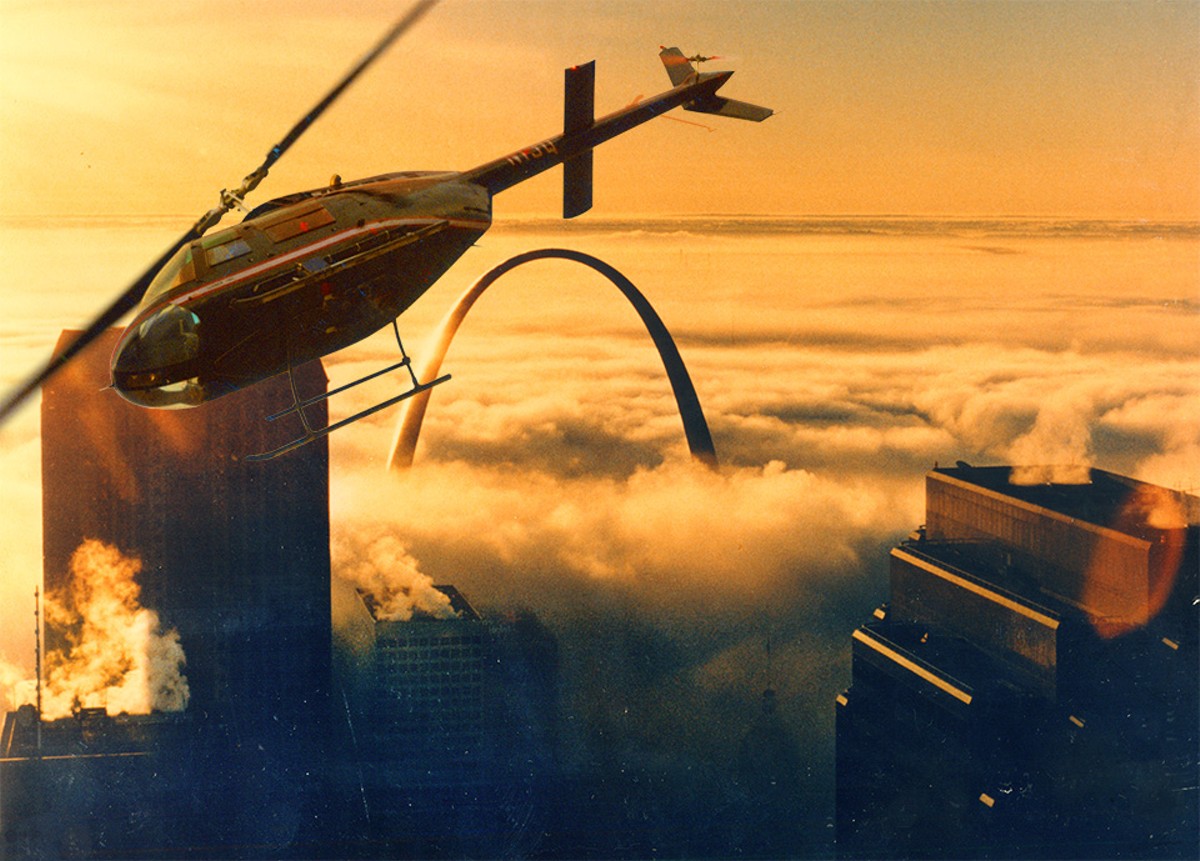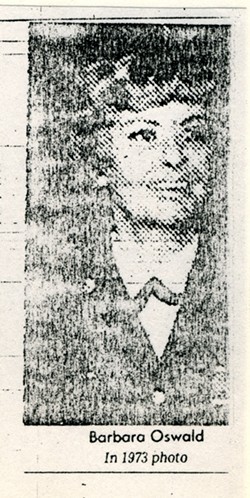The Revolution Mini 500 helicopter cost about $24,000, arrived in boxes and provided pilots of modest means the rare opportunity to own a one-seater aircraft. All they had to do was build it themselves.
Barklage was both a daredevil and a lifelong tinkerer who worked around professional mechanics every day — the perfect customer for the Mini. He appropriated a corner of a hanger at his employer's airfield, and over some months, the boxes and parts became a delicate-looking flying machine with a bubble front.
The Mini stood barely eight feet tall and weighed less than 900 pounds. The news choppers Barklage usually flew cost more than $1 million and weighed 1,500 pounds. With that weight (and cost) came sophisticated safety features, including crumple zones in the landing gear designed to absorb the force of a crash. By comparison, the Mini was a soda can with rotors — but pilots reported that it was spectacularly fun to fly.
One day, traffic reporter Tori Lyons witnessed the tiny white helicopter diving and swooping toward the ground, aiming squarely at a hula hoop being proffered by Chris Berry. Behind the controls of the Mini, her husband deftly snatched the hoop from her hand mid-dive. The Mini then darted up into the sky, like a small bird who'd caught a worm.
Lyons remembers seeing the helicopter while it was still under construction, and thinking, "No flipping way is he going to fly in that."
"Obviously he could fly it," she says now. "It was a helicopter."
Still, Lyons didn't like the look of the Mini. "I know I said it to him, 'You're going to die in that thing," she recalls. Barklage scoffed that he'd already survived Vietnam and a hijacking. He told her, "I've already had plenty of chances to die."
In fact, Berry says her husband was so confident in the product that he agreed to speak at the manufacturer's conference, attesting to the aircraft's safety and stability. It's not clear whether he was aware of the mechanical limitations in the Mini 500's guts, particularly the Rotex engine, whose 1994 owner's manual buried a warning on the very last page: "This engine, by its design, is subject to sudden stoppage! Engine stoppage can result in crash landings. Such landings can lead to serious bodily injury or death."
On September 19, 1998, Barklage took off in the Mini 500 from the airport in Cahokia. In a later report by the National Transportation Safety Board, a witness reported seeing the helicopter clearing the tops of telephone wires and flying in a wide turn around a hangar before making its way west toward St. Louis. Barklage and his Mini were less than 200 feet off the ground.
Then, the witness heard a pop. Sudden silence replaced the whine of the helicopter's engine. The helicopter started to drop.
At 30 to 40 feet, the craft seemed to level out, but it was still coming down. The helicopter struck nose-first, cartwheeling into the ground and finally coming to rest in a soybean field north of the airport.
In such a light craft, the crash wrought catastrophic damage to Barklage's head and spine. He was in a coma for six days.
Berry knew he was gone at the moment of impact. On September 25, she asked the doctors to unhook the machines keeping her husband's body breathing.
The federal investigation concluded that Barklage's engine had seized up — specifically, "a loss of engine power due to cold seizure of the power-takeoff cylinder" — a malfunction that was already proving fatally common in the line of kit helicopters. Dozens of accidents were recorded after the Mini 500's release in 1994. By the time the manufacturer folded in 1999, nine pilots had died in its helicopters. Barklage had been the fifth.
Twenty years later, the world has moved on from Barklage's flying days. No radio reporters hover over highways anymore.
In 2017, the last two holdouts, KTRS and KMOX, joined the rest of the local radio media in grounding their airborne traffic operations. Traffic reporters like Tori Lyons now sit in front of a computer screen watching maps compiled with GPS data. These days, she delivers reports to radio audiences in Kansas City, Springfield and St. Louis, as well as Wichita and Omaha. GPS makes the job easy. Barklage would have hated it.
On Lyons' first day on the job in 1992, she remembers Barklage inviting her up to his office and pulling out a thick blue scrapbook. She had just moved back to St. Louis, and wasn't familiar with the Barklage mythology. He flipped the album through pages of newspaper clippings, a picture of Trapnell, a gory photo of a helicopter dripping with Barbara Oswald's blood.
But the scrapbook contained more than carnage. Later passed to Barklage's brother, and then to his former sister-in-law, the album's 87 pages trace a life of bravery and good luck: a boy staring out of his school portrait, a high school track star, a combat pilot, a tireless reporter.
Multiple pages are devoted to the 1978 escape, the headlines and follow-up stories preserved behind adhesive plastic. There are no stories about Robyn Oswald.
On page 77, the scrapbook opens to a four-picture spread, grainy photos captured off a TV screen. The photos show a man hanging from the skid of a helicopter, his feet kicking above the Mississippi. A life saved.
It is that version of Barklage that his friends remember the best. Surely that's the case for Jim Cavins, the O'Fallon patrol officer riding along with Barklage on the day of that rescue in 1991.
Cavins had seen the man fall from the bridge just as Barklage made a pass, the helicopter hovering for a moment over the sea of blinking red brake lights and gawking motorists.
Barklage turned in his seat, and gestured to Cavins. "Undo your harness and open the door," Barklage instructed.
Below them, the man struggled to keep his head above water. Cavins remembers Barklage's voice, steady and unpanicked. It was the voice of a pilot who didn't think twice.
"Allen just says, 'We're going to get him,'" Cavins says. "And then we just dove."








